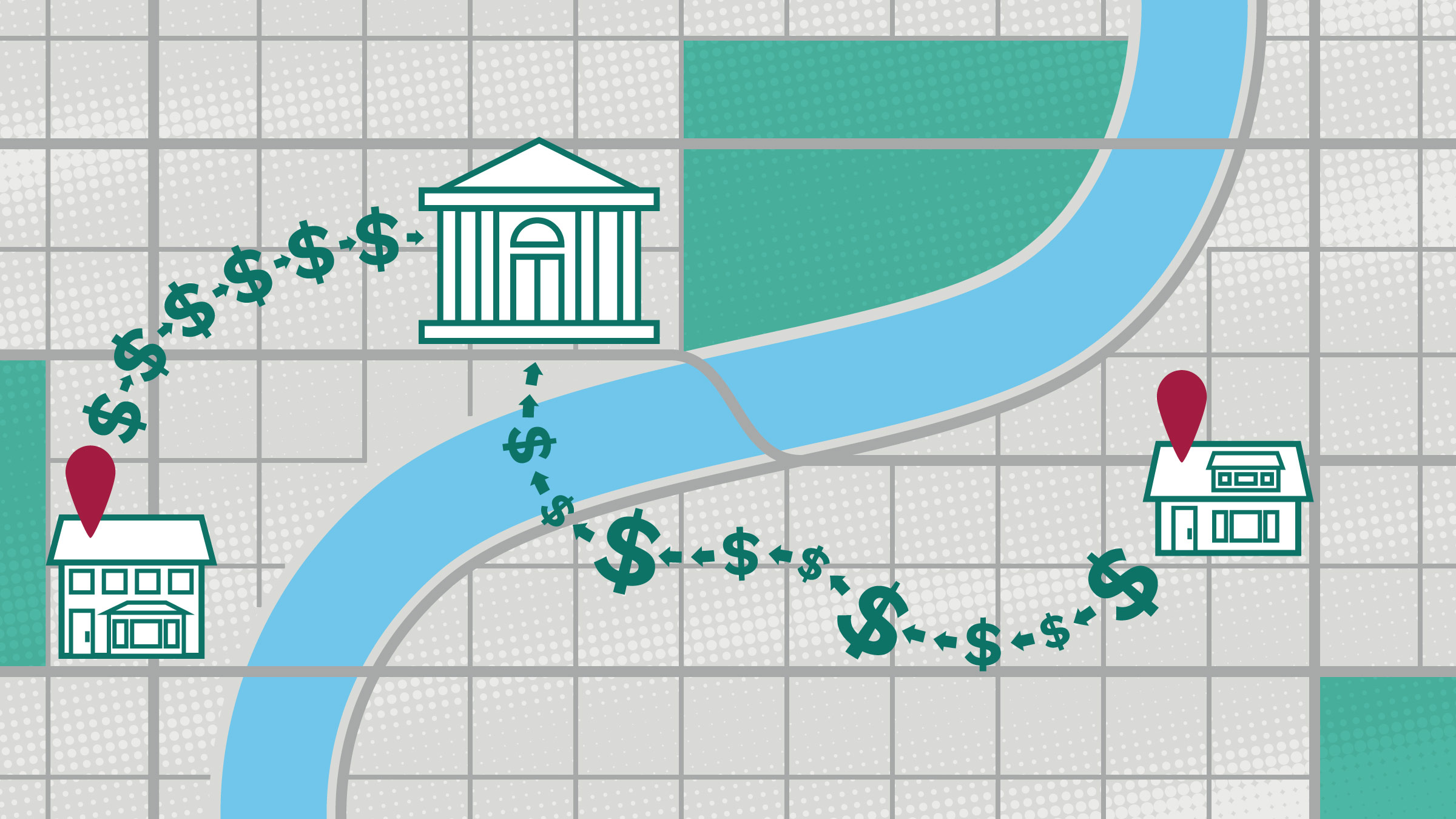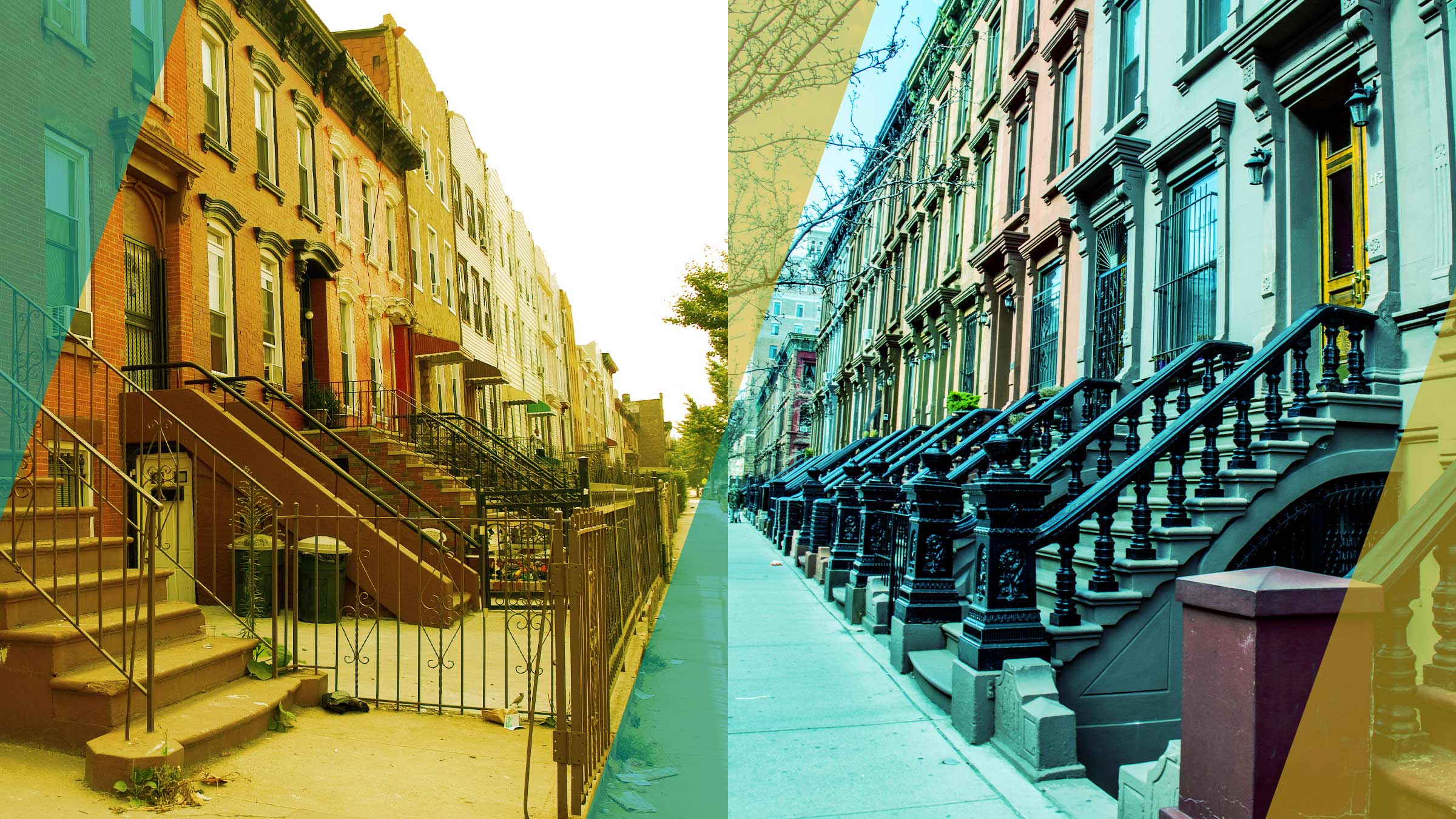Most research on long-term U.S. inequality focuses on income; relatively little examines wealth, largely due to lack of good asset data. But a June 2018 working paper from the Opportunity & Inclusive Growth Institute addresses that imbalance with a new data set developed from historical surveys, and it shows that wealth—specifically, ownership of stocks and homes—has been a central force behind U.S. inequality trends for 70 years.
The study’s authors analyze decades of data on earnings, savings, home values, equity holdings and other assets, along with related demographics, to develop a nuanced portrait of American inequality. Their analysis begins by confirming the findings of other scholars: increased income polarization since the 1970s, with particular damage to the relative position of the middle class. It also sheds new light on economic inequality between blacks and whites by quantifying vast differences in wealth as well as income, and no progress in diminishing those gaps.

Perhaps the study’s most novel contribution, however, is in revealing the singular role of household portfolio composition—ownership of different asset types—in determining inequality trends. Because the primary source of middle-class American wealth is homeownership, and the main asset holding of the top 10 percent is equity, the relative prices of the two assets have set the path for wealth distribution and driven a wedge between the evolution of income and wealth.
In brief, as home prices climbed from 1950 until the mid-2000s, middle-class wealth held its own relative to upper-class wealth even as middle-class incomes stagnated. But after the financial crisis, the stock market’s quick recovery and slow turnaround of housing prices meant soaring wealth inequality that even exceeded the last decade’s climb in income inequality.
Income and wealth polarization
“Income and Wealth Inequality in America, 1949-2016” (Institute Working Paper 9), by Institute visiting scholar Moritz Kuhn, Moritz Schularick, and Ulrike I. Steins, substantiates the dramatic rise in U.S. income inequality from 1970 to the late 1980s, with the share of total income earned by the bottom 50 percent dropping from 21.6 percent to 16.2 percent, while the top 10 percent share climbed from 30.7 percent to 39.9 percent. By 2016, these shares had diverged further, down to 14.5 percent for the bottom half and up to 47.6 percent for the top 10th. (More technically, the Gini coefficient rose from 0.43 to 0.53.)
For wealth, the story is more surprising. For 50 years postwar, wealth rose largely in parallel across the distribution, keeping wealth inequality in check. This changed in the financial crisis, when wealth of the bottom 90 percent plummeted. By contrast, the top 10 percent’s wealth share soared after the crisis. As a consequence, the decade after the financial crisis saw a stronger increase in wealth concentration than the six decades after World War II.
Racial inequality: “The overall summary is bleak”
The demographic detail and 70-year span of the new database also permitted close analysis of racial inequality, pre- and post-civil rights eras. The picture is discouraging. Income disparities are as large now as in 1950, with black household income still just half that of white households.
Study authors
Moritz Kuhn, Moritz Schularick, and Ulrike I. Steins of the University of Bonn are co-authors of this Institute working paper.
The racial gap in wealth is even wider, and similarly stagnant. The median black household has less than 11 percent the wealth of the median white household (about $15,000 versus $140,000 in 2016 prices). The economists also find that the financial crisis hit black households particularly hard.
“The overall summary is bleak,” they write. “Over seven decades, next to no progress has been made in closing the black-white income gap. The racial wealth gap is equally persistent. … The typical black household remains poorer than 80% of white households.”
The race between stocks and homes
To explain the divergent trends in income and wealth inequality before the crisis, the economists draw on a key strength of the database: It includes both income and wealth information, household-by-household, and 70 years of balance sheets with detailed portfolio composition.
With this, they find that the bottom 50 percent now holds little or negative wealth (that is, debt), and its share dropped from 3 percent of total wealth in 1950 to 1.2 percent in 2016.
For the upper half, portfolio diversification determines wealth trends. The data show that homes are the primary asset for households between the 50th and the 90th percentile, while the upper 10th also owns a large share of equities. Therefore, middle-class household wealth is strongly exposed to house price fluctuation, and the top 10 percent is more sensitive to stock market variations.
This difference in asset holdings explains how, prior to the crisis, middle-class households experienced rising wealth in parallel with the top 10th, even though their real incomes stagnated and savings were negligible. But the picture changed dramatically post-crisis. In “a race between the stock market and the housing market,” the economists write, the richest 10 percent, by virtue of a climbing stock market, enjoyed soaring post-crisis wealth, while average household wealth largely stagnated. (See figure.)
“When house prices collapsed in the 2008 crisis,” the economists conclude, the “leveraged portfolio position of the middle class brought about substantial wealth losses, while the quick rebound in stock markets boosted wealth at the top. Relative price changes between houses and equities after 2007 have produced the largest spike in wealth inequality in postwar American history.”






